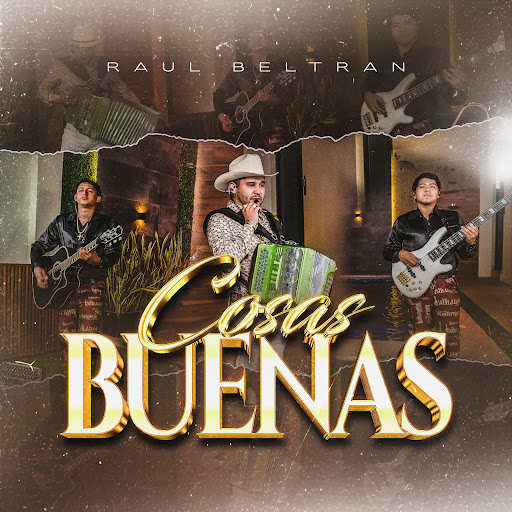
Album
Cosas Buenas
Raul Beltran
Raul Beltrán brings the full force of his cultural roots and emotional storytelling to the forefront in Cosas Buenas, a project that balances musical complexity with lyrical intimacy. This is not just an album—it’s a... Read More
Tracklist
Other Albums by Raul Beltran
- 01. Cosas Buenas
About Cosas Buenas
Raul Beltrán brings the full force of his cultural roots and emotional storytelling to the forefront in Cosas Buenas, a project that balances musical complexity with lyrical intimacy. This is not just an album—it’s a soulful celebration, a rhythmic testimony, and a warm invitation into the world of an artist who refuses to be anything less than genuine.
From the first note to the last, Cosas Buenas embodies the essence of heartfelt Latin music. The songs are vibrant, full of color and emotion, showcasing Beltrán’s unique ability to blend traditional sounds with contemporary energy. Whether you’re dancing, reminiscing, or simply listening with your eyes closed, this album hits where it matters most—right in the soul.
The album kicks off with a surge of melody and rhythm, drawing listeners in with its high-energy opening tracks. You can feel the heartbeat of the genre in every strum of the guitar, every rise of the accordion, and every tap of the percussion. Beltrán knows how to create a sonic landscape that carries you—joyfully, emotionally, and sometimes nostalgically—through every moment.
While some tracks invite movement and celebration, others pause for reflection. Songs like “Siempre Contigo” and “Luz de Mi Vida” pull back just enough to let Beltrán’s vocals soar. It’s here that his storytelling truly shines, offering poetic imagery and heartfelt messages of love, family, and resilience.
At its core, Cosas Buenas is a celebration of culture. Raul Beltrán infuses each song with the sounds of his roots—whether through traditional instrumentation or subtle lyrical references to home, tradition, and shared memories. This authenticity doesn’t just resonate with longtime fans of Latin music—it elevates the album as a timeless body of work.
He pays homage to the genres that shaped him, from norteño to regional pop, weaving them together in a way that feels fresh yet familiar. The result is an album that proudly represents the past while confidently stepping into the future.
One of Raul Beltrán’s greatest strengths on Cosas Buenas is his voice—not just in its technical ability, but in its emotional honesty. His vocals carry a rawness that connects instantly with listeners. Whether he’s singing about love lost, love found, or the bittersweet in-between, there’s an undeniable sincerity in every word.
Tracks like “Te Quiero Bien” and “No Digas Adiós” highlight this vocal intimacy. They’re stripped just enough to spotlight the nuance in his tone—the quiver of hope, the crack of longing, the whisper of nostalgia. It’s the kind of performance that leaves a mark.
Cosas Buenas doesn’t rely on trends or gimmicks. Its strength lies in its craftsmanship and emotional depth. Each song is carefully constructed, with thoughtful lyrics and arrangements that reward repeated listening. The album flows with intention, offering a musical journey rather than just a playlist of singles.
Beltrán keeps things grounded while exploring themes that are both personal and universal. From romantic declarations to reflections on family and identity, the album covers a wide emotional range. And yet, it all feels cohesive—like a single narrative told across many beautiful chapters.
With Cosas Buenas, Raul Beltrán has delivered what feels like a defining moment in his artistic journey. It’s bold yet vulnerable, rooted yet innovative. It proves that he’s not just an artist with talent—he’s a storyteller with a voice that needs to be heard.
For fans of Latin music and newcomers alike, this album offers a bridge between tradition and now. It invites listeners to move, to feel, and most importantly, to connect. There’s a reason why Cosas Buenas translates to “Good Things”—because this album is full of them.